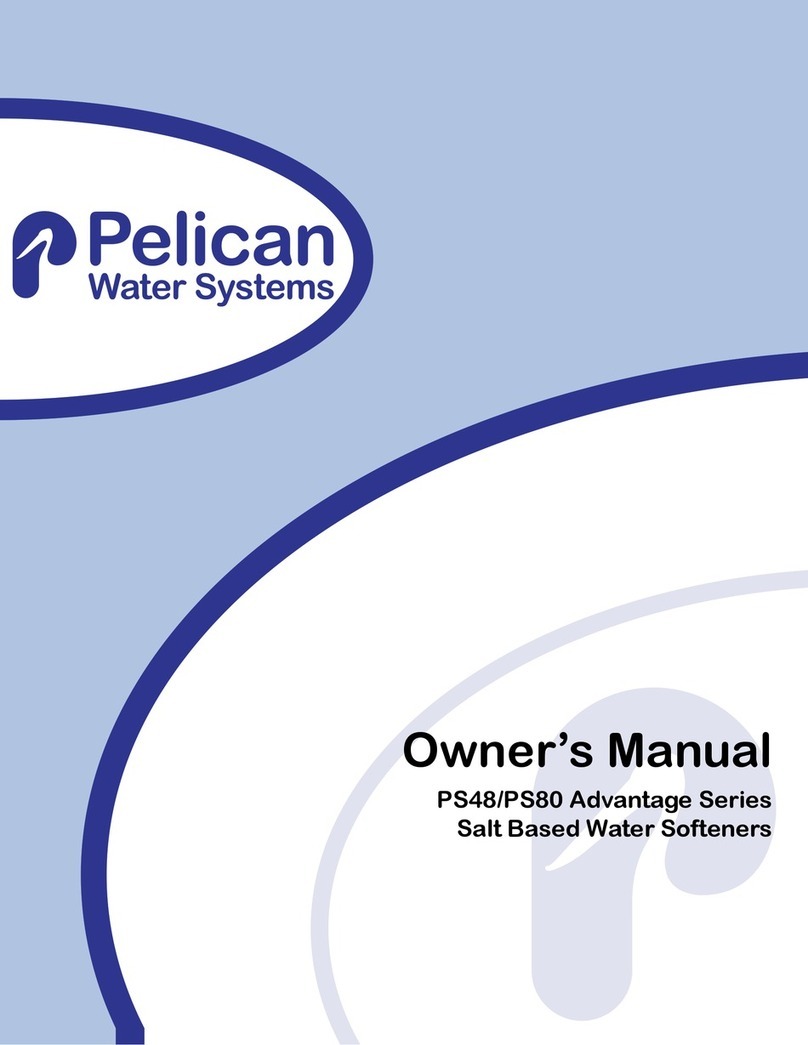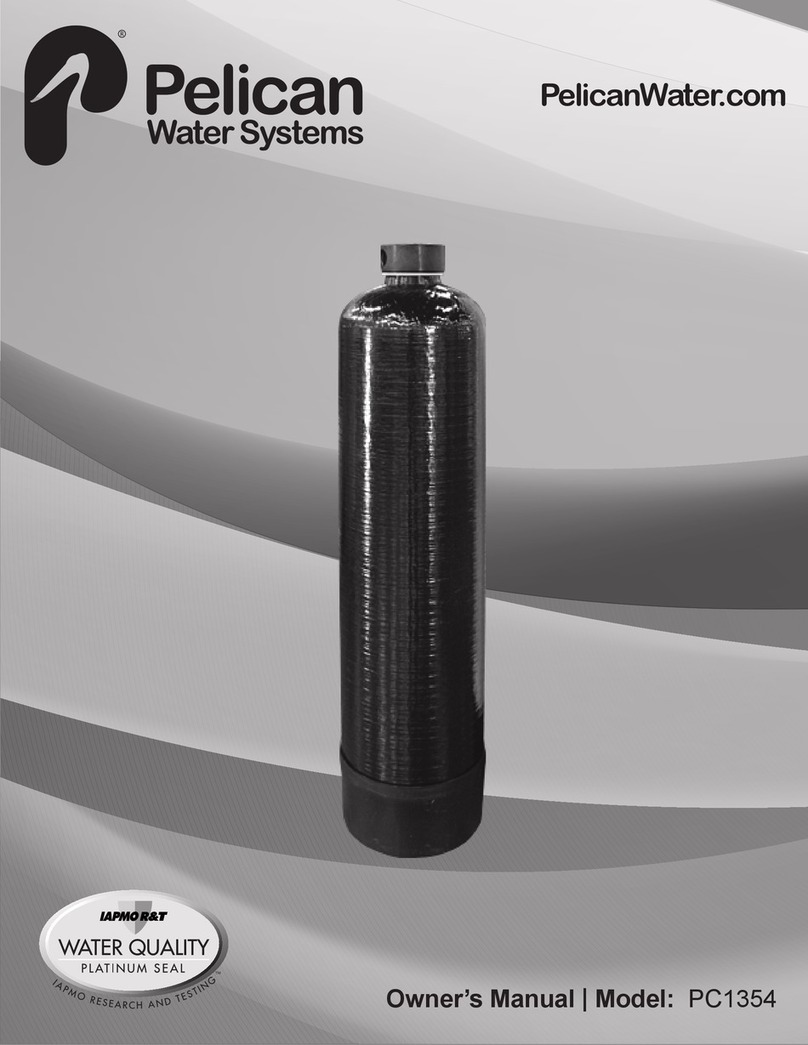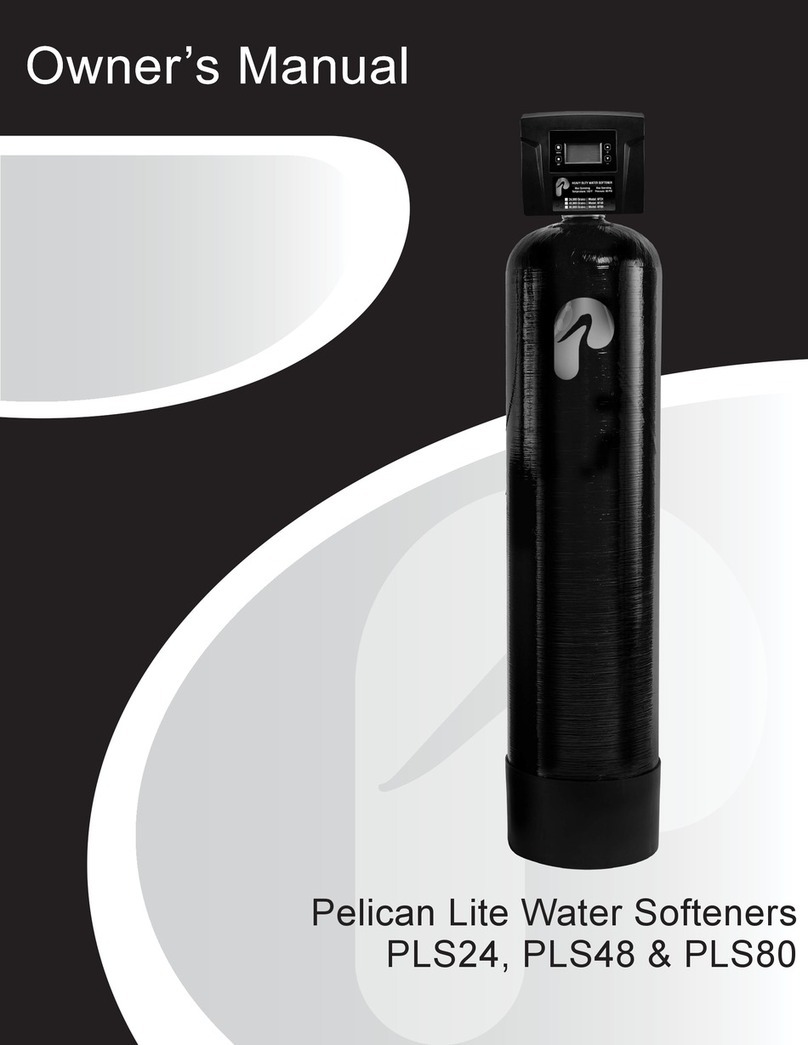
ProductOperationandSpecifications
Rated Service Flow (GPM):
PSE1800 8-10 GPM
PSE2000 12-16 GPM
Rated Capacity (Gallons):
Holds9.1GallonsinthePSE1800Tanks
Holds16.7 Gallons in PSE2000 Tanks
MinimumWorkingPressure(PSIG):25PSI
Operating Temperatures (°F): 36°F – 12 0°F
pH Range: 7-11 pH
Water Conditions for NaturSoft Operation:
The water should be free of Hydrogen Sulfide, a dissolved gas with a characteristic smell of
rotten eggs. If present, it can coat the catalytic surface of the media and interfere with the
process. The gas should be removed through adequate pre-treatment.
The water should be free of hydrocarbons, oils and lubricants. If present, they can coat the
catalytic surface of the media and interfere with the process. Remove through adequate pre-
treatment.
The water should contain less 1 mg/l of phosphates. Phosphates sequester dissolved
hardness molecules preventing them from forming crystals and may coat the catalytic media
surface and interfere with the process.
The water should be free of dissolved copper. If present, it can adsorb on the catalytic
surface of the media and interfere with the process.
Plumber Notice: If this or any other systemisinstalledin a metal (conductive) plumbing system, i.e. copper
or galvanized metal, the plastic components of the system will interrupt the continuity of the plumbing
system. As a result any errant electricity from improperly grounded appliances downstream or potential
galvanic activity in the plumbing system can no longer ground through contiguous metal plumbing. Indeed,
older homes may have been built in accordance with building codes from decades ago some of which
actually encouraged the grounding of electrical appliances through the plumbing system. Consequently, we
highly recommend either the installation of a by-pass consisting of the same material as the existing
plumbing, or a grounded “jumper wire” bridging the equipment and re-establishing the contiguous
conductive nature of the plumbing system. Also ensure that your installation of the system comply with
applicable state and local regulations.
Attention Well Water Customers: Installation of this system will be after any and all well equipment (ie.
Well pump, bladder tank, pressure tank, etc).






























